READY TO GET STARTED?
REQUEST A FREE ESTIMATE
Fill out the form below or call (888) 466-7849 for a free, no-obligation estimate.
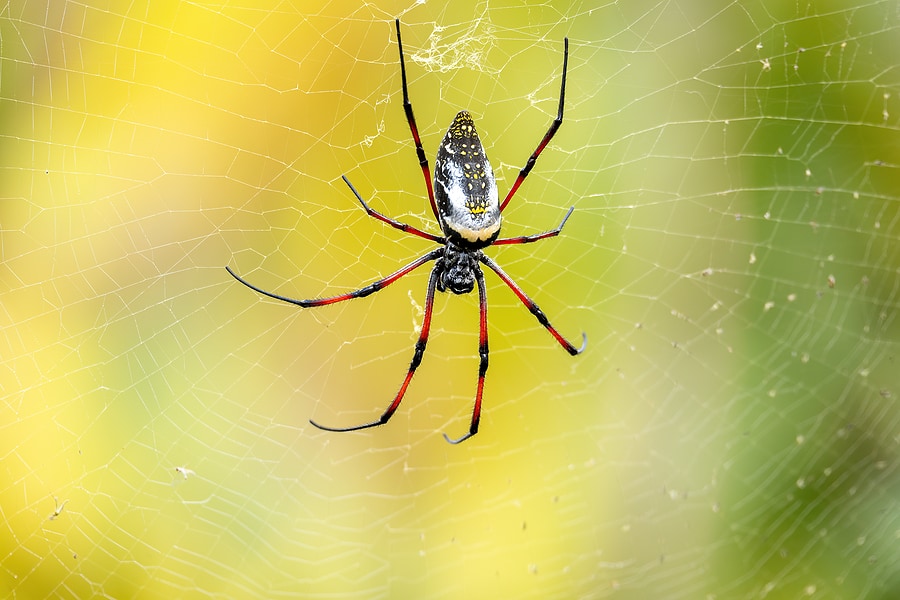
As the fall season settles in, many homeowners in Georgia are gearing up for the seasonal battle against fall pests. Among the various critters that make their way into our homes and gardens, orb weaver spiders are a common sight. While these eight-legged arachnids may appear intimidating, understanding their characteristics and behaviors is essential to maintaining a pest-free environment.
Orb weavers belong to the Araneidae family and are known for their distinctive circular webs, which they expertly spin to trap flying insects. These spiders come in various colors, shapes, and sizes, but they all share some common features:
Orb weaver spiders are outdoor creatures, and you’ll most commonly encounter them in the following places:
Before rushing to eliminate orb weaver spiders from your property, it’s essential to consider both the advantages and disadvantages they bring.
If you wish to minimize orb weaver spider presence around your home, here are some practical tips:
Don’t let orb weaver spiders and other fall pests disrupt your peace of mind this season. Take proactive steps to manage and prevent their presence by reaching out to our expert pest control team. Request a free pest control quote today and ensure a pest-free environment for you and your family.
In conclusion, while orb weaver spiders can be beneficial for natural pest control, they may also pose challenges for homeowners. Balancing their advantages and disadvantages and taking preventative measures can help you enjoy a pest-free home during the fall season.

As the leaves change color and the temperature begins to drop, many people in Georgia eagerly await the arrival of fall. However, along with the beauty of this season comes a new set of challenges for homeowners – the invasion of fall pests. These household pests are often seeking shelter and warmth as they prepare to overwinter, making your cozy home an inviting destination. In this blog post, we’ll explore some common fall pests in Georgia and provide valuable tips on how to prevent their intrusion.
While fall brings cooler weather and beautiful landscapes to Georgia, it also heralds the arrival of these common fall pests. Preventing these pests from entering your home is crucial to maintaining a pest-free environment. Don’t let these overwintering pests ruin your autumn. Contact your local pest control company today for a free pest control quote to help protect your home and family.
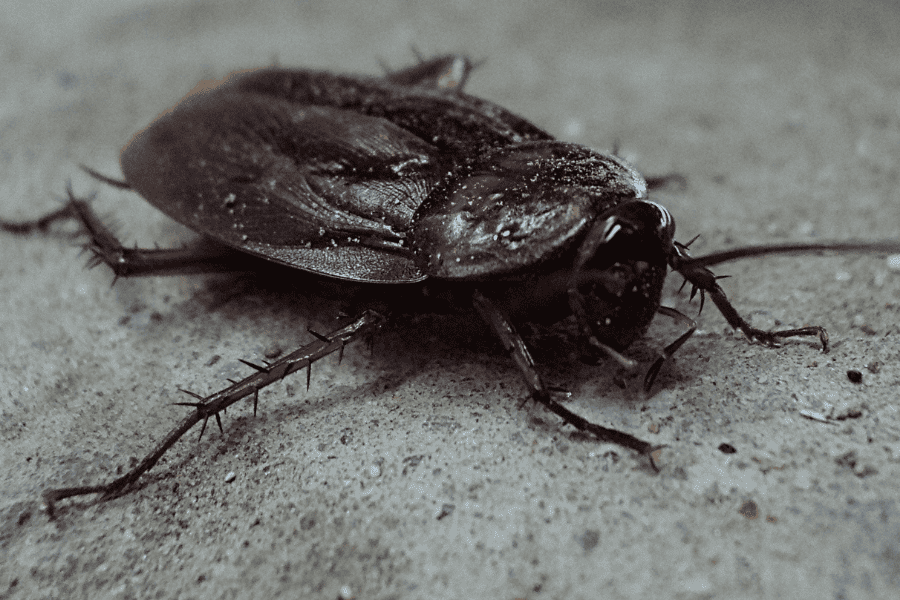
Smokybrown cockroaches are commonly found in the southeastern United States, from central Texas eastward to Florida and as far north as North Carolina. They prefer living in areas that are warm and have high humidity, preferring wooded areas where they are often found under mulch or in tree holes.
The smokybrown cockroach is about 1.5 inches long and has a dark brown to black body. They have a distinctive mahogany color, which is why they are sometimes called mahogany cockroaches. They are also known for their ability to fly, which makes them more difficult to control than other types of cockroaches.
Typically found outdoors, these nocturnal creatures are most sighted in:
More signs of these roaches include roach droppings and egg cases. The smokybrown egg casing can appear dark brown to black in coloring.
Being attracted to interior lights, they can enter your home through openings in windows, doors, and other gaps. They can contaminate any surfaces they touch, spreading bacteria. Proteins found in these types of roaches may also trigger asthma or allergic reactions.
If you see an increase of roaches in your home be sure to reach out to your local pest control company for a customized pest control plan to keep your home pest-free!
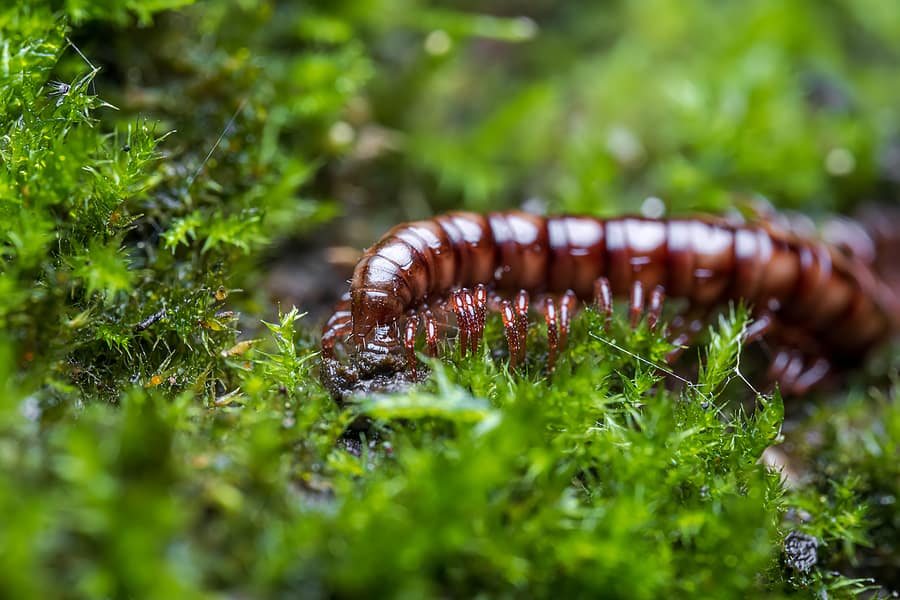
Centipedes are arthropods that will often make their way into your home. Although centipede means “100 legs,” not every centipede actually has that many. Most centipedes prefer dark, damp spaces and are commonly found outdoors under rocks, logs, or piles of leaves. Other species can be found in your home. Here are 5 of the most common type of centipedes you may come across in our area.
House centipedes are found throughout North America and even in Hawaii. They can grow to be 1-1/2″ long and have 15 pairs of legs. Their bodies are yellowish-gray in color with 3 stripes on their backs. They have long antennae. House centipedes are usually found in dark areas of your home, like the basement. They are usually harmless, but will bite you if they are handled. They are quite beneficial to have around as they will eat roaches, moths, termites, and other household pests.
The Eastern Red centipede is found across the East Coast. These centipedes grow to about 2-1/2″ long. Their bodies are red or orange in color with lighter orange legs. They like moisture and will burrow under wet leaves, logs, compost piles, and woodpiles. They are venomous with a very painful bite.
The Eastern Bark centipede can be found in the Eastern United States and Canada westward to the Rocky Mountains. They can grow up to 3″ long. These centipedes vary in color, ranging from solid orange-brown to dark brown. Some species also have an olive colored stripe on their back. Their heads are brownish-red and their antennae and legs are yellow. These centipedes are nocturnal and live under rocks and logs. They are venomous and will bite.
The diamondback soil centipede will grow up to 2″ in length. They have light brown bodies with dark brown diamonds on their backs. They are found throughout North America, typically in gardens rather than inside the home. They live under debris and will burrow into the soil. They don’t have eyes and don’t bite. They secrete a poisonous substance from the underside of their bodies in an attempt to ward off predators but they are not considered a threat to humans.
Brown centipedes originated in Europe (where they are quite common) but can now be found on the Eastern seaboard of the United States. They grow to about 1″ in length. They have brown bodies, long antennae, and long tails. They hunt at night and can often be found in dark areas of the home, such as the basement. They do have venomous fangs but they are so small that they do not pose any threat to humans. In fact, they are beneficial to have around because they eat other household pests.
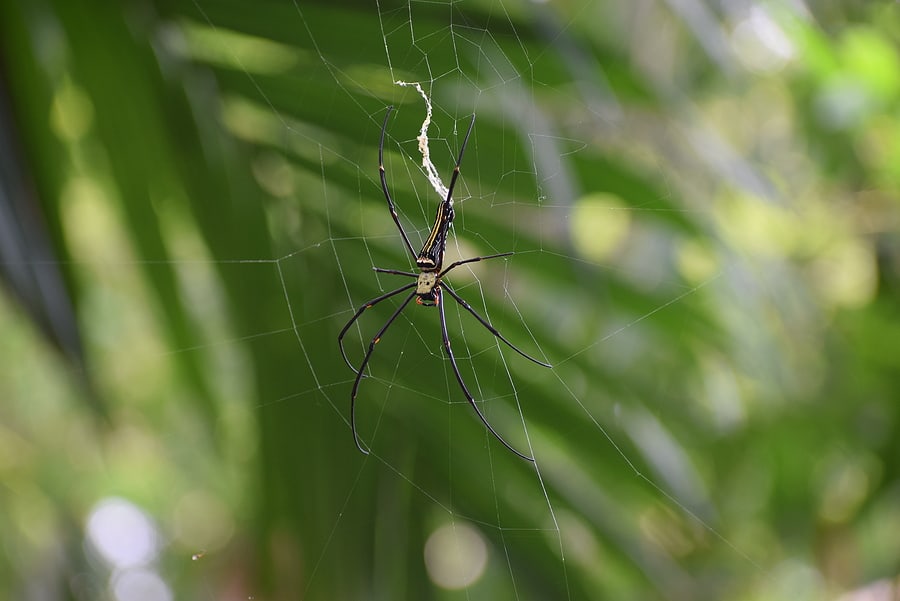
Fall weather has a significant impact on pest activity. As the days get shorter and the temperatures start to drop, many fall pests will begin to seek out warm, sheltered places to overwinter. This can lead to an increase in pests in your home and yard.
Some of the most common fall pests active in the fall include:
Prevent fall pests from invading your home this fall by following these tips:
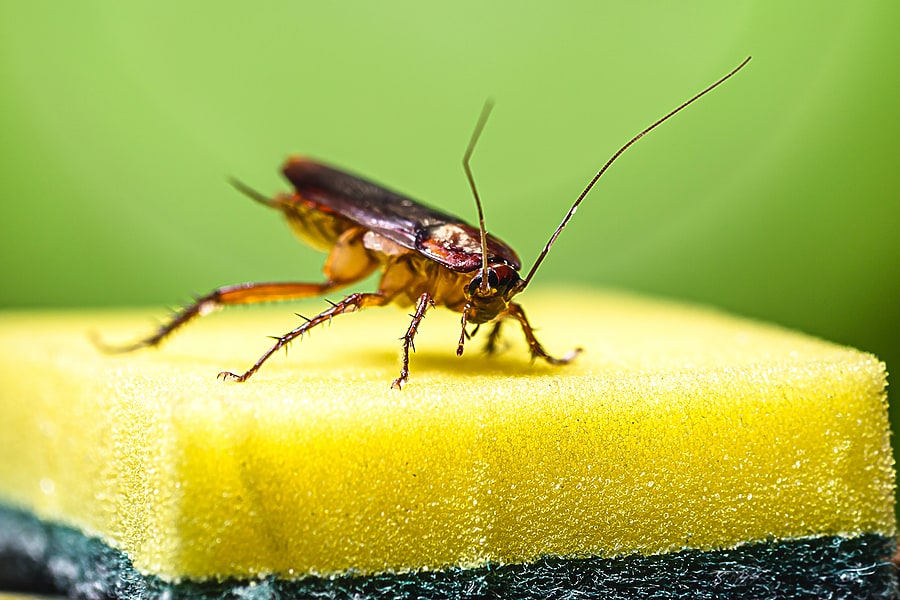
Roaches are common household pests that are highly resilient and difficult to eliminate. They reproduce quickly, making them hard to keep under control once an infestation has been established. Cockroaches will infest anywhere they can find an available supply of food, water, and shelter. They are commonly found in areas near food and moisture (kitchens and bathrooms). They are also prevalent in multiunit housing (apartments, condos, etc.). Once established in your home, roaches can cause serious health risks for you and your family. Here are some of the reasons roaches are dangerous to your health.
Roaches are known to carry at least 30 different types of bacteria including typhoid fever, cholera, dysentery, and poliomyelitis. They spread these diseases to humans by contaminating food and surfaces in our home. We can also inhale bacteria from the air near a cockroach infestation.
The allergens roaches carry can trigger asthma in those who are already afflicted with it. They are also known to cause asthma in those who didn’t previously have it. The incidence of allergic reactions can increase when roaches are present in the home. They are triggered by cockroach debris, including discarded shells, saliva, body parts, and feces. Their saliva is also known to cause skin rashes and sneezing.
Roaches can be found scavenging through the trash, dumpsters, on spoiled food, and even feces. They pick up contaminants from these surfaces as they crawl through them which stick to their legs and bodies and are then left behind as they crawl across our food and clean surfaces. When we eat food or touch surfaces that have been contaminated by roaches, it can cause sickness for us, as well.
Making your home less inviting to roaches is the first step in preventing them. Here are some cockroach prevention tips you can utilize in your home.
If you have a problem with roaches or other household pests, contact your local pest control company for an inspection.
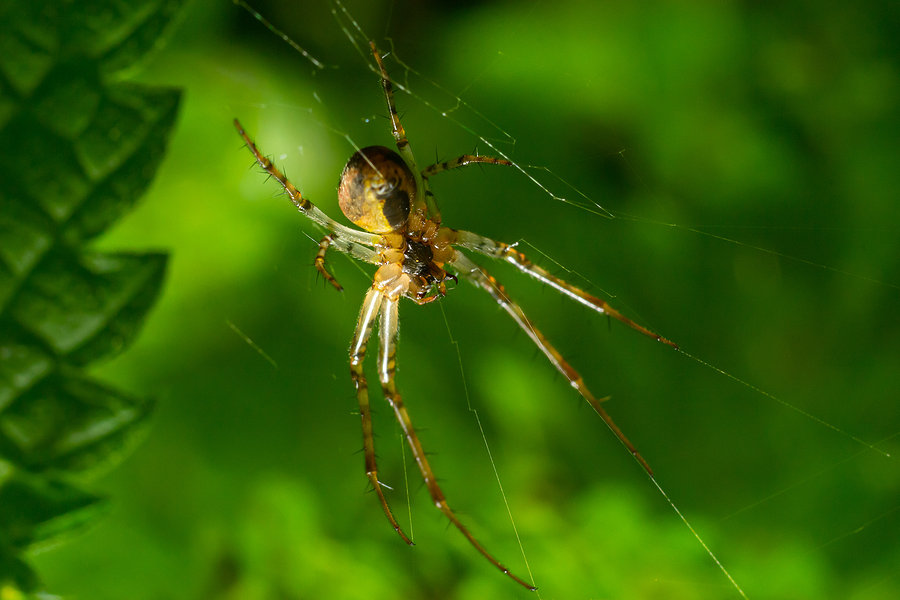
The thought of spiders in your home is enough to make anyone feel a little unsettled, but these household pests are actually beneficial to have around. They are a natural form of pest control, keeping other pest populations like mosquitoes and flies under control in and around your home. Although there are a few venomous spiders found in our area, most others are harmless and don’t pose a threat to you or your family. While it’s not realistic to expect to eliminate every spider from your home, you can make it less inviting for them to help keep them out without the use of harsh chemicals or pesticides. Here are 7 natural spider control remedies you can use around your home.
There are several plants you can place inside and outside your home to naturally deter spiders from coming around. Lavender, mint, eucalyptus, and citronella are known to deter spiders from building their webs near them. If incorporating these plants into your landscaping isn’t a possibility, you can also spray essential oils with these scents, in addition to peppermint or tea tree oil, anywhere spiders are a problem. You can also crush mint and place it in sachets inside your cabinets or other areas where spider activity is high.
Spiders are masters of hide and seek. They can be found hiding in cracks, crevices, cabinets, knotholes, behind baseboards, inside seldom used items in your home (such as shoes), under rocks, in woodpiles, and under piles of leaves and dirt. By getting rid of these hiding places you can encourage spiders to seek shelter somewhere besides in your home. Move leaves, grass clippings, compost and woodpiles away from your exterior walls. Dust and declutter your home on a regular basis. Frequently dust any areas where cobwebs appear. Organize your storage areas and get rid of any empty boxes.
Spiders spin webs to trap their prey as a food source. If you come across spider webs either inside or around your home, remove them as soon as possible. Eventually the spiders will move on and build their webs somewhere else.
While spiders aren’t attracted to your outdoor lights, other pests that they feed on are. Mosquitoes, flies, gnats, and other common prey for spiders are drawn to your outdoor lights, providing a literal buffet for a waiting spider. Keep your outdoor lights off as much as possible to help cut down on your outdoor pest populations.
Diatomaceous earth is a crumbly material made of the fossilized remains of an algae called diatom. DE can be sprinkled on the ground around your home and used as an insecticide. DE kills several pests in addition to spiders and can be used around your family and your pets.
There are some organic substances that work as natural repellents for spiders. Vinegar is a common one. The acetic acid in vinegar gives a sour taste and odor to spiders who come into contact with it. Mix equal portions of vinegar and water in a spray bottle and spray it around your home, especially in areas where pests may be getting inside. Citrus is also a natural spider deterrent. Keep citrus fruits in a bowl on your kitchen counter and use the leftover peels to rub onto your windowsills and doors to help keep spiders out.
Spiders can get in through the tiniest cracks and crevices in your home. Make sure to regularly inspect the exterior of your home and seal any places where pests might be gaining entry inside. Be sure to check doors and windowsills and use caulk or weatherstripping to seal any cracks and openings.
While most spiders don’t cause any problems in your home, they can become a nuisance, especially in your yard or garden. Webs can be built in inconvenient places; they can cover your plants or hide blooms, stunting their growth. If you have a problem with spiders or need some help getting them under control, contact your local pest control company for an evaluation.
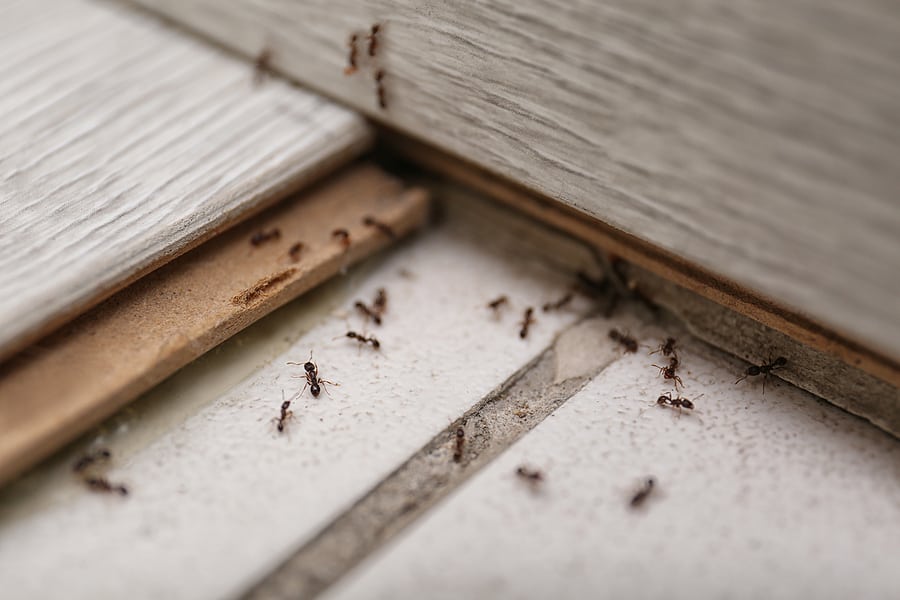
Home ownership comes with loads of responsibilities, with pest control one of the most important. Routine pest control is a sound investment that helps protect both your investment and the health of your family. Here are 5 benefits to routine pest control.
Routine pest control allows professional pest control technicians to identify potential pest problems before they become full blown infestations. Once identified, preventative measures can be put in place to help keep pests from coming back. By thoroughly inspecting your home, these professionals can give you tips to seal entry points, repair any problematic areas, and make changes to reduce things that attract pests to your home in the first place.
Pests can not only carry diseases, they also can trigger allergies and asthma and contaminate food and surfaces throughout your home. Many pests are also attracted to moisture. If you have areas where there are leaks, wet or rotted wood, or other high moisture content, this can lead to mold and bacteria which is also extremely unhealthy for you and your family. Routine pest control helps correct these unhealthy conditions that can attract pests.
Catching pest problems early saves you money in the long run. It is less costly to treat a problem early than it is to treat a full blown infestation. Not only that, if an infestation is allowed to grow over a long period of time, these pests can do significant damage to your home, not only costing you money to treat for the pests, but also for expensive repairs to any damage they’ve caused.
Pest control professionals can help identify any problem areas like moisture issues, leaks, cracks in foundation, openings around doors and windows, roof damage, and crawlspace issues. These issues can lead to water damage, increased utility bills, put more work on your HVAC systems, causing them to wear out sooner, and even structural damage to your home. By identifying these issues earlier, you can repair them sooner, hopefully preventing even more damage by leaving them untreated.
With routine pest control, there’s no need to wait until a pest problem arises. Visits are scheduled on an ongoing basis, saving you the hassle of calling around to find someone who can come out at the last minute. This also guarantees you priority if an issue comes up in between your regularly scheduled visits. Your technician will also be familiar with you and your home, making it easier to identify where the problem might have started and how to remedy it quickly and efficiently.
Contact your local pest control company today to get started with your routine pest control needs.
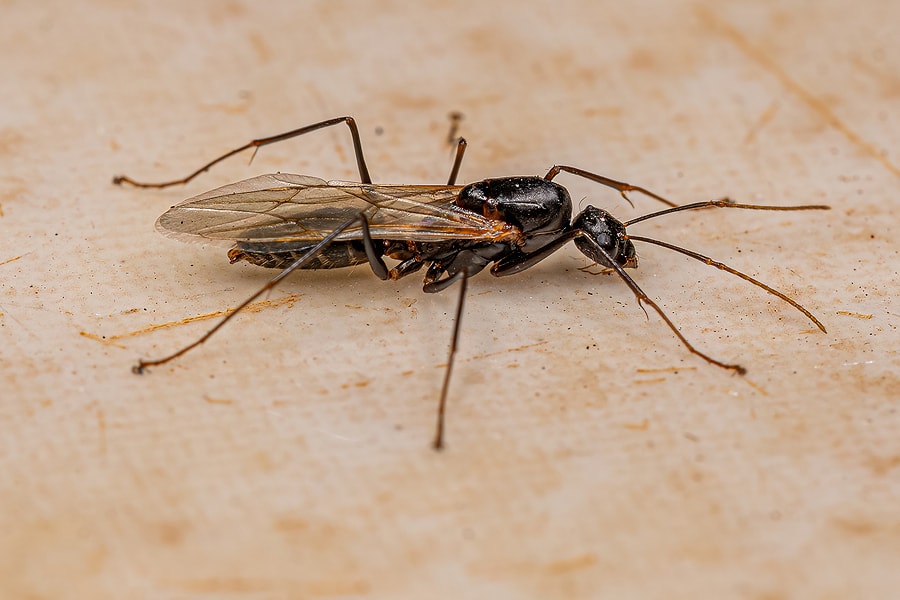
Carpenter ants and termites can wreak havoc on the wood frame of your home. Prevention and treatment depends on which species you are dealing with. How can you tell the difference between these two winged insects? Here we look at the differences in carpenter ants vs termites, along with how to eliminate them.
Carpenter ants (Camponotus) and termites (Isoptera) have many similarities, including the fact that both are infamous for causing wood damage in homes. Aside from the size of their wings during reproduction, termites are nearly the same size as the several species that make up the carpenter ant group; and, like carpenter ants, termites burrow into wood, allowing them to destroy your home’s wood frame. Because both carpenter ants and termites swarm in the spring to mate, homeowners who observe the swarms frequently confuse them.
Ants and termites have quite different lifespans—termites live longer because of their lengthy life cycle. While the queen carpenter ant can live for up to ten years, male carpenter ants marry and then die within a few months, if not weeks. Ants have four life stages: egg, larva, pupa, and adult. Termites, on the other hand, have a longer lifespan: the queen can live for more than 30 years, while worker and soldier termites live for one to two years and swarmers, aka reproductive termites, live for three to four years. Termites have a lengthier life cycle than ants, with five stages consisting of egg, larva, nymph, molt, and adult.
Termites can do more damage to homes than carpenter ants, causing major damage when left undetected for long periods of time. Carpenter ant damage can take years to develop and is usually easier to notice because these ants congregate in moist locations and can be seen darting around.
A closer examination of the pest in question reveals substantial physical distinctions that make it easy to distinguish between termites and carpenter ants. Examine the insect closely with a magnifying lens, or shine a bright light on it and use your naked eye.
The two insects interact with wood in various ways. Termites, for example, consume the wood in which they nest. Carpenter ants excavate their nests by digging into the wood; they do not eat the wood but rather push it out via holes in their colonies’ galleries. If you observe small heaps of wood shavings or frass (insect excrement) below the holes, it can help you identify a carpenter ant infestation. Carpenter ants prefer moist and damaged wood in which to build their nests, whereas termites will munch right through healthy wood.
Another noticeable difference is the appearance of the wood tunnels. Carpenter ant tunnels and galleries will be smooth and finished, whereas termite galleries will be rough and ragged because they are filled with layers of soil and mud.
Finally, the presence of mud tubes can help you identify which pest you are dealing with. A mud tube shows the presence of termites, either currently or previously. These are tubes that are created on the outside of walls or between earth and wood to serve as routes for termites.
Because carpenter ants and termites are so different, effective control strategies for each are likewise different. Carpenter ants can often be handled by removing the conditions that attracted them, but a termite infestation would usually necessitate a termite control expert. If you have a problem with either of these winged insects in or around your home, contact your local pest control company for an evaluation.